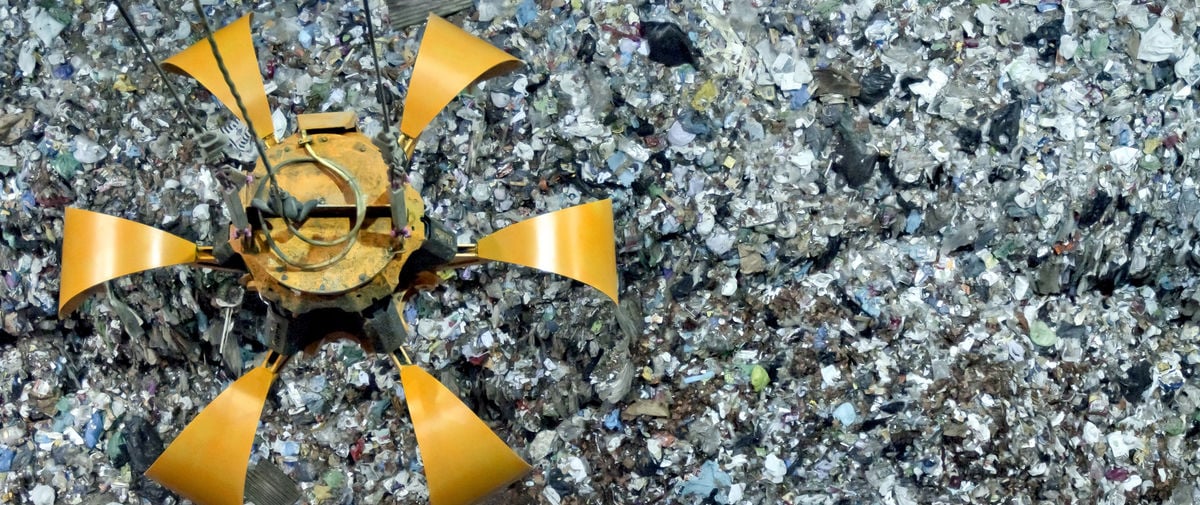Our everyday lives generate waste on an increasing scale while in parallel our growing energy needs call for alternatives to fossil fuels. Recovering energy from non-recyclable waste can help address both these issues. This is where waste to energy plants come in.
What are waste to energy plants?
Waste to energy (WTE) plants incinerate municipal solid waste (MSW) - waste generated by our everyday urban lives and activities. While a large portion of this waste cannot be utilized for recycling, incineration avoids the waste from being dumped into landfills. The burning process converts it into heat and electricity, as well as other useable materials.
This is a growing industry – by necessity. “There is exciting circular economy potential where cities can produce at least some of their own energy out of what otherwise is a growing landfill problem,“ says Konecranes product manager Arto Hujanen: “Municipal waste is estimated to increase by 70% by 2050, which is a huge amount. At the moment, 60% of waste goes to landfill according to a study by World Bank*. A lot of this can be recycled, but we could be burning all the rest instead of dumping it for more sustainable energy generation and to reduce CO2 emissions.”
From waste to energy: Facilitating a circular economy
“A circular economy is the way forward,” says Changqin Du, Chairman of The Board from Shanghai Pudong Environmental Protection Company, in China. “Shanghai City, as well as the rest of China, are building low carbon, green and wasteless city initiatives – and these waste to energy plants are a part of that.”
In Shanghai, the first WTE plant was commissioned in 2001. Changqin Du says: “The city has been growing fast and people’s living standards improved, resulting in a rapidly increasing waste problem as well. Today, with multiple sites, we have a capacity to incinerate 280,000 tonnes of the city’s waste per day. Just one tonne of incinerated waste can provide 480kWh of electricity for the grid, saving the need to burn 0.15 tonnes of standard coal and reducing 0.25 tonnes of CO2 emissions.
“Looking at our coastal WTE plant as an example, it can dispose of 4,000 tonnes of waste per day, with an electricity supply of about 192,0000 kWh. According to the official account issued by Pudong, the average household uses 2,000 kilowatt hours per year. The electricity generated by this WTE plant every day can meet the annual electricity demand of 960 households.”
This kind of green transition and shift towards zero waste to landfill is important to Konecranes – a leading supplier of waste grab cranes to WTE plants.
“Globally, there are currently more than 2,600 WTE plants and Konecranes has delivered more than 1,400 cranes to these sites all over the world. Lots more are under construction and in planning,” says Hujanen.
Handling waste: efficient and reliable cranes are king
A WTE plant typically works 24/7 with a constant in-flow of waste, so avoiding downtime is crucial. This is why each plant usually has at least two cranes working together to allow for example for essential maintenance without having to stop operations.
“To further support this kind of continuous operation, but also efficiency and safety, we make sure that every maintenance period is planned well ahead of time – and this is supported by the full automation and smart technology in these cranes,“ says Hujanen.
All the waste grab cranes used at the Shanghai Pudong Environmental Protection Company WTE plants are from Konecranes. “We use the Konecranes fully automated waste collection grab at all our WTE sites – the benefits are that they reduce the need for human intervention and the potential for incorrect operation – and this improves safety and efficiency.
“We have been a Konecranes customer for 18 years – the quality of the cranes, the after-sales services and maintenance program are the corner stones of our long-term partnership. Their specialist teams are always able to meet and also anticipate our needs,” says Changqin Du.
Konecranes has been delivering waste grab cranes since 1958. “We are thinking about what to do differently, smarter, more sustainably and more efficiently, all the time. And how to serve the customer better. We have lots of long-term, loyal customers who come back to us for more cranes, or to retrofit and modernize their existing ones over the decades. They have seen that they work and there isn’t much down time, thanks to our smart maintenance solutions,” says Hujanen.
» Learn more about Konecranes' offering on waste to energy and biomass
*Source: https://datatopics.worldbank.org/what-a-waste/trends_in_solid_waste_management.html
